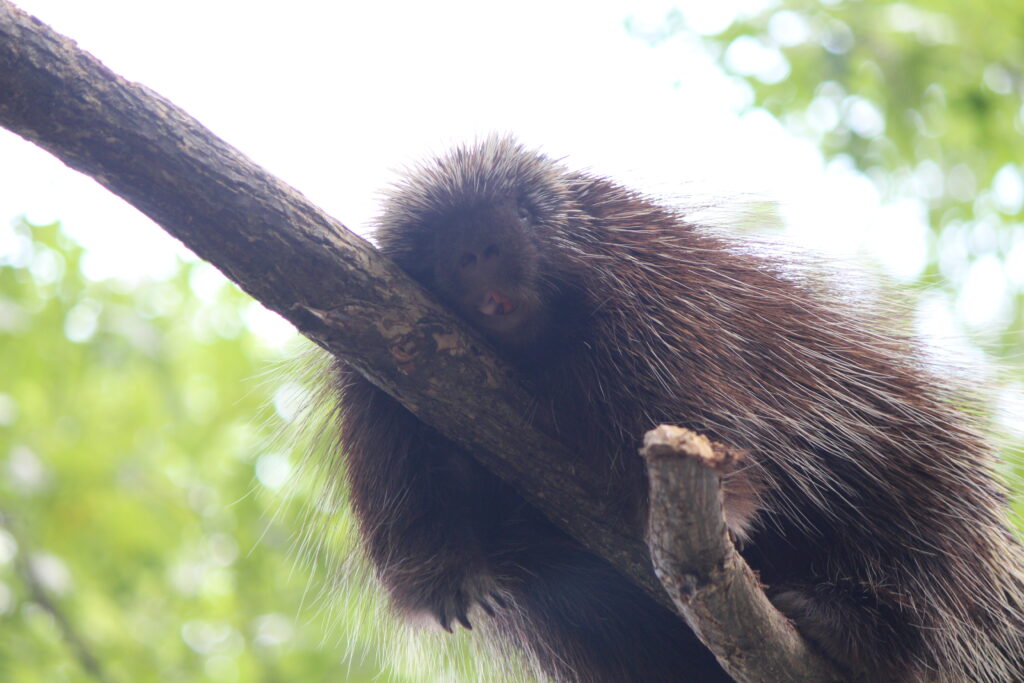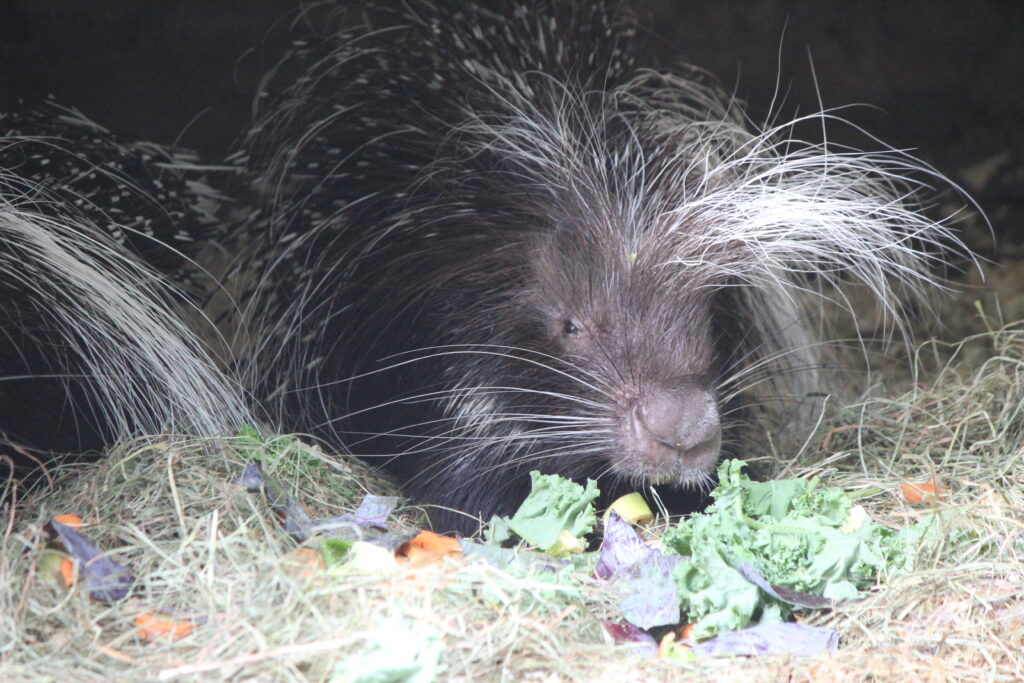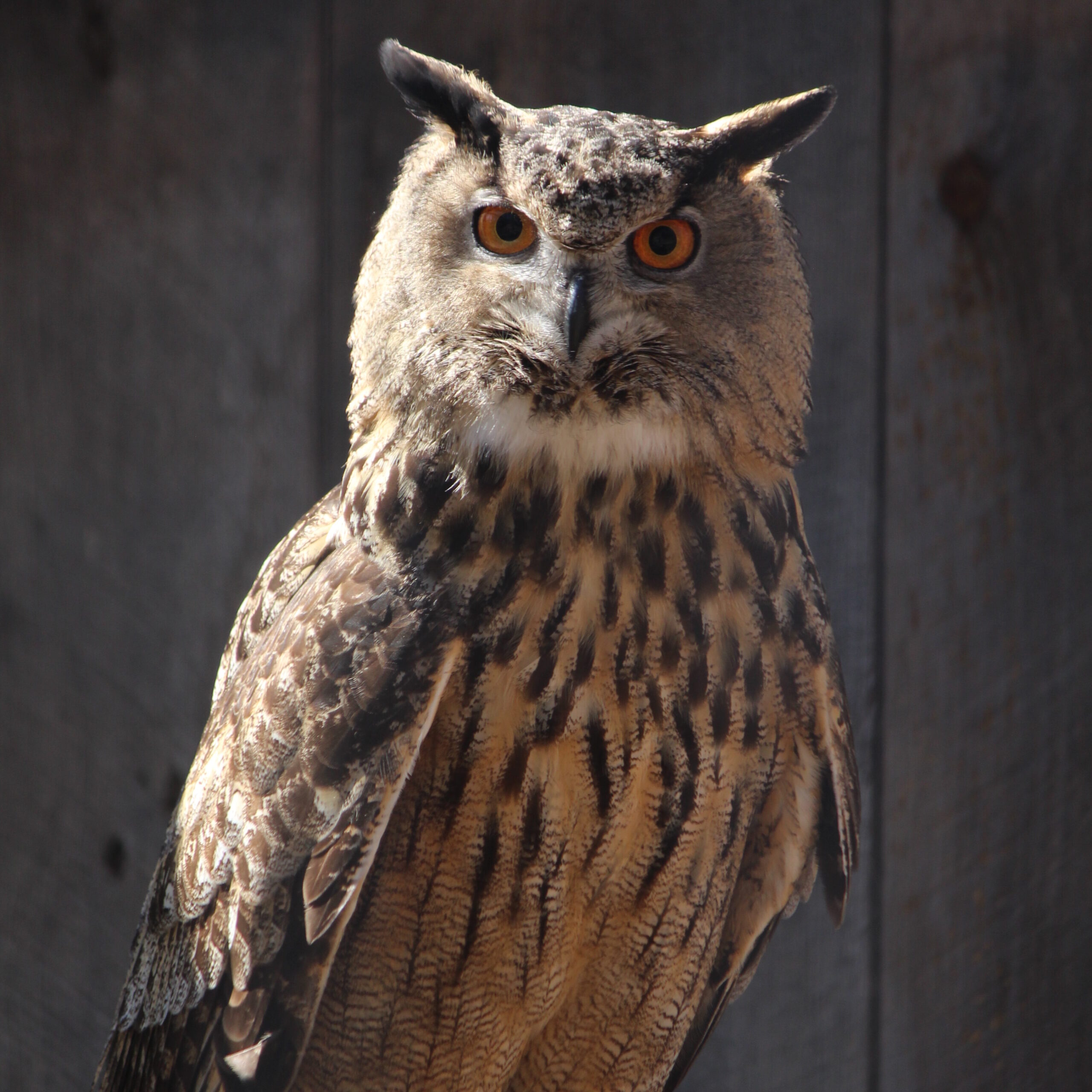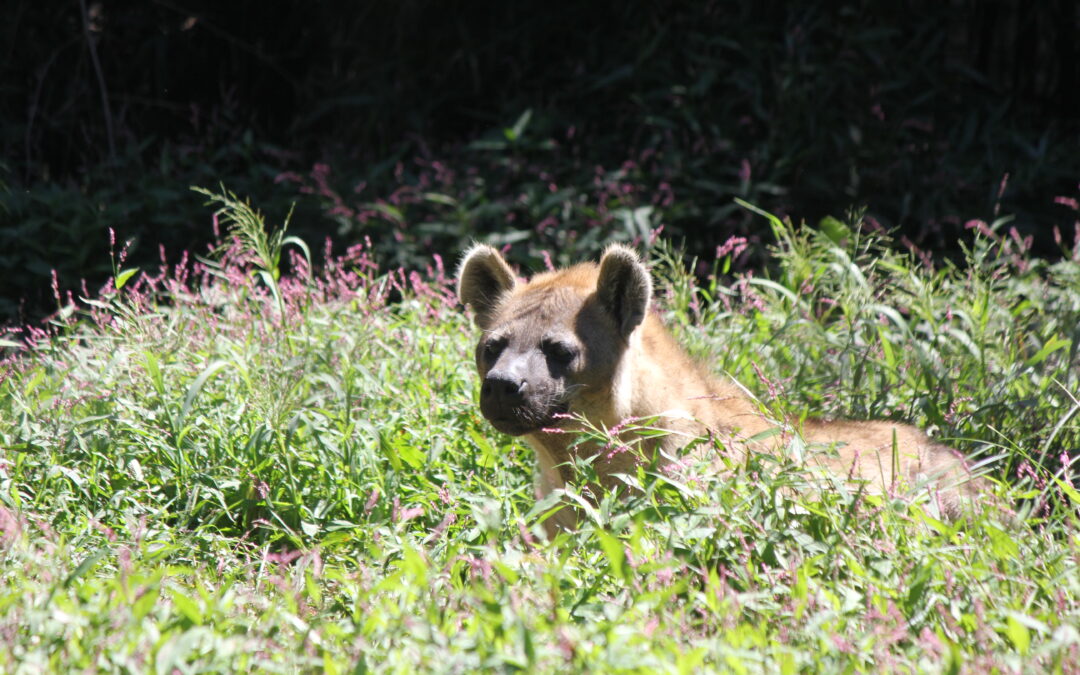During the day our animals spend their time running around, swinging from branches, or playing with the enrichment left for them by their zookeepers. Once the sun sets many of them begin to relax and go to sleep. However, for some animals, when the sun sets their day is just beginning. We have several species of nocturnal animals at the zoo, which means they are active primarily at night. Here is a highlight of four of our nocturnal animals you might miss during your trip to the zoo.
North American Porcupines

North American porcupines are active primarily at night. During the day they spend their time up in trees sleeping and occasionally feeding.
Our North American porcupines spend the majority of their day time at the top of their enclosure in tree branches.
The most notable feature of these porcupines are their quills, which are sharp, hollow hairs with fish-hook-like barbs.
Despite the popular depictions of porcupines in television and movies, they cannot shoot their quills, instead, they raise them and try to strike predators with their tails.
Their quills’ barbed ends hook into the skin of their predators and become lodged in the skin resulting in a fatal infection. Thankfully, North American porcupines have antibiotics in their skin to prevent infections if they injure themselves with their own quills.
African Crested Porcupines
Like all porcupines, African Crested porcupines are most active at night. As nocturnal animals, they forage alone and can travel up to nine miles in search of food.
During the day they return to their nests or caves to rest. At the zoo, you’ll typically find our two African Crested Porcupines sleeping away inside their stone cave.
Unlike North American porcupines, African porcupine quills do not have barbed ends but are still incredibly sharp and can pierce skin.
When threatened, an African porcupine will raise and fan its quills, stamp its feet, and charge their attacker.

Spotted Hyena
Spotted hyenas have good hearing and sharp eyesight at night. This makes it the best time for them to hunt so most of their movement is between sunset and sunrise.
Most days you’ll find our hyena pair sleeping in the long grasses in their enclosure. When the sun starts to set the hyenas will wake and start moving around their enclosure.
Hyenas have powerful jaws, which they use to easily crush bones. They will typically eat the entire carcass since they can digest things most animals are unable to such as skin and bones. Hyenas will even eat the parts they can’t digest like hair and horns

Eurasian Eagle Owl
Eurasian eagle owls are one of the largest species of owls in the world. These primarily hunt at night and spend their days perched up in trees roosting or resting, far from any predators on the ground.
During the day you can find our two Eurasian eagle owls in the back of their enclosure perched on a tree.
It is often believed that owls can turn heads all the way around. This is a common misconception, while owls cannot do this, they can turn their heads 270 degrees. This is thanks to the 14 vertebrae inside of an owl’s neck (this is double the vertebrae a human has) that allow for more movement.

